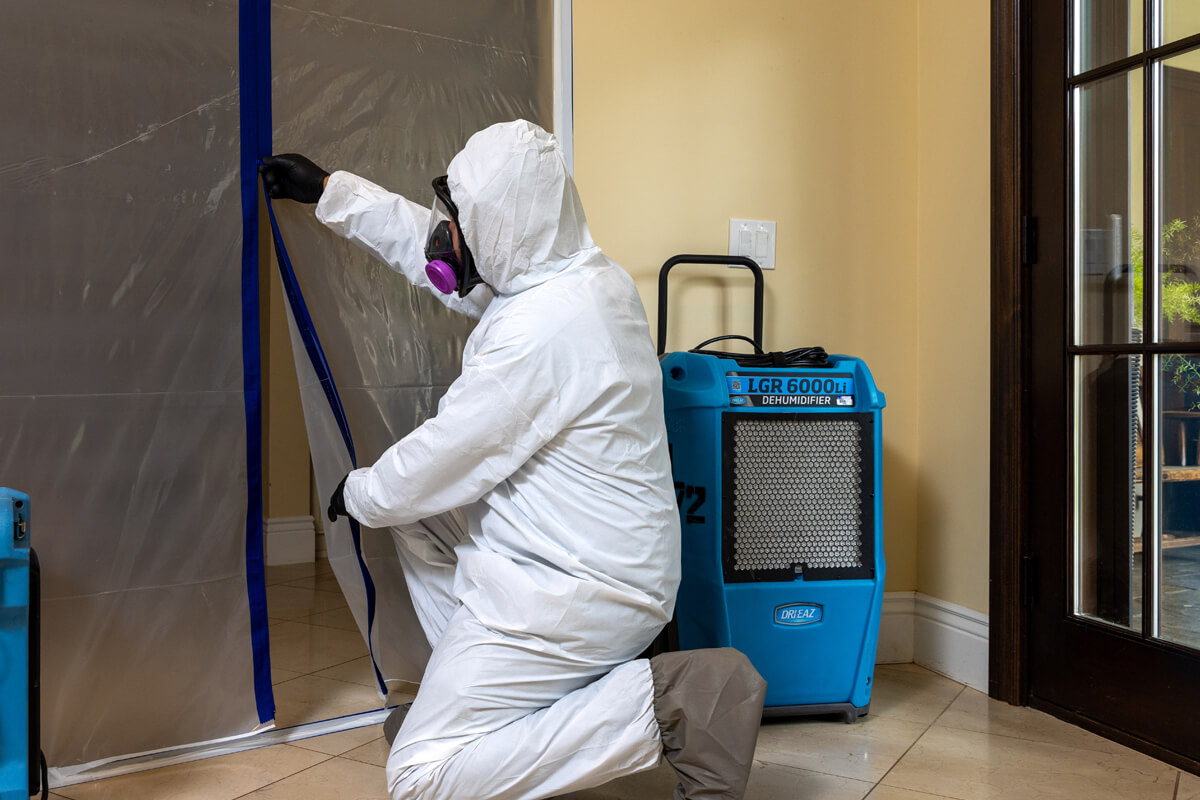Thorough Mold And Mildew Removal Solutions for Full Indoor Air Quality Restoration
Mold invasions in indoor areas can posture substantial dangers to both residential property and human health. The presence of mold not just degrades the structural integrity of buildings however additionally jeopardizes the quality of the air we take a breath. Addressing mold and mildew concerns requires a comprehensive technique that exceeds simple surface cleaning. By exploring comprehensive mold remediation remedies that incorporate extensive evaluation, strategic removal techniques, and aggressive prevention steps, one can truly bring back indoor air quality to its optimal state.
Comprehending Mold and Its Threats
Mold and mildew, a kind of fungi that grows in moist settings, presents considerable health dangers to individuals revealed to it. Prolonged direct exposure to mold and mildew can worsen current problems such as bronchial asthma and allergic reactions, making it critical to resolve any type of mold infestations quickly.
Mold and mildew growth can deteriorate floorings, walls, and ceilings, endangering the stability of the framework over time. Understanding the risks linked with mold and mildew is vital for executing efficient remediation strategies to make certain the health and safety and security of residents and the durability of the building.
Proper Evaluation and Assessment Strategies
Reliable analysis and evaluation strategies are important in precisely identifying and reviewing the extent of mold infestations within a framework. In addition to visual assessments, various devices such as moisture meters, thermal imaging cameras, and air tasting tools may be made use of to evaluate the degree of mold and mildew contamination and to recognize covert mold and mildew resources within floorings, ceilings, or walls.
Furthermore, proper analysis methods involve determining the kind of mold and mildew present, as different mold and mildew varieties may need specific remediation techniques. Sampling methods, including air tasting and surface sampling, can assist in determining the types and focus levels of mold and mildew spores present in the interior atmosphere. By using detailed assessment and assessment strategies, remediation specialists can develop targeted and reliable approaches to get rid of mold and mildew invasions and restore interior air quality to secure degrees.
Reliable Mold Elimination Techniques
Applying tried and tested removal strategies is essential for successful elimination of mold from interior environments. When handling mold and mildew removal, it is necessary to start by dealing with the source of dampness to avoid future development. Control of the damaged area is key to stop the spread of mold and mildew spores to uncontaminated locations. This can be accomplished via making use of physical obstacles like plastic sheeting and negative atmospheric pressure systems.

After physical removal, comprehensive cleansing and disinfection of the area are needed to get rid of any staying mold and mildew spores. Utilizing antimicrobial agents can aid in visit this website avoiding mold regrowth. It is essential to address any kind of underlying concerns triggering wetness build-up to prevent future mold troubles. By following these strategies vigilantly, complete mold and mildew eradication can be achieved, restoring interior air high quality effectively.
Avoiding Future Mold Growth
Attending to the origin triggers of dampness accumulation is extremely important in preventing future mold and mildew growth within indoor environments. To efficiently avoid mold from returning, it is crucial to control humidity levels listed below 60%, as mold grows in wet problems. By attending to these variables and applying proactive actions, people can efficiently minimize the threat of future mold and mildew development and keep a healthy indoor environment.
Making Certain Long-Term Indoor Air High Quality
Preserving optimal interior air quality over the long-term calls for a thorough technique that encompasses regular surveillance and proactive measures. Consistent air top quality analyses via specialist testing can assist recognize any emerging concerns right here quickly. Applying a robust ventilation system that makes certain proper airflow and sufficient filtering is necessary for sustaining tidy indoor air. Moreover, routine cooling and heating upkeep, consisting of filter replacements and air duct cleaning, is critical in stopping the accumulation of impurities that can endanger air high quality.
In addition to tracking and upkeep, promoting good interior air high quality methods among passengers is vital for long-term performance. Urging habits such as correct ventilation, decreasing resources of indoor air pollution, and reducing moisture levels can considerably add to a much healthier interior environment. Education and learning and awareness campaigns about the relevance of indoor air high quality can assist foster a culture of duty and mindfulness amongst staff members or citizens.
Final Thought
Finally, comprehensive mold and mildew removal solutions are important for complete indoor air high quality reconstruction. Comprehending the dangers of mold and mildew, performing proper evaluation and examination strategies, carrying out efficient removal approaches, stopping future mold development, and guaranteeing lasting indoor air top quality are all critical action in keeping a healthy indoor setting. By complying with these steps carefully, individuals can produce read here a tidy and secure home without the unsafe results of mold and mildew contamination.

Moreover, appropriate evaluation techniques include determining the type of mold existing, as different mold varieties might call for certain removal techniques.The following step in effective mold elimination is the physical elimination of mold and mildew colonies. To successfully prevent mold and mildew from returning, it is critical to manage humidity levels listed below 60%, as mold thrives in moist problems. Comprehending the risks of mold, conducting appropriate assessment and inspection techniques, executing reliable removal methods, stopping future mold development, and making sure long-lasting indoor air quality are all essential steps in preserving a healthy and balanced indoor environment.